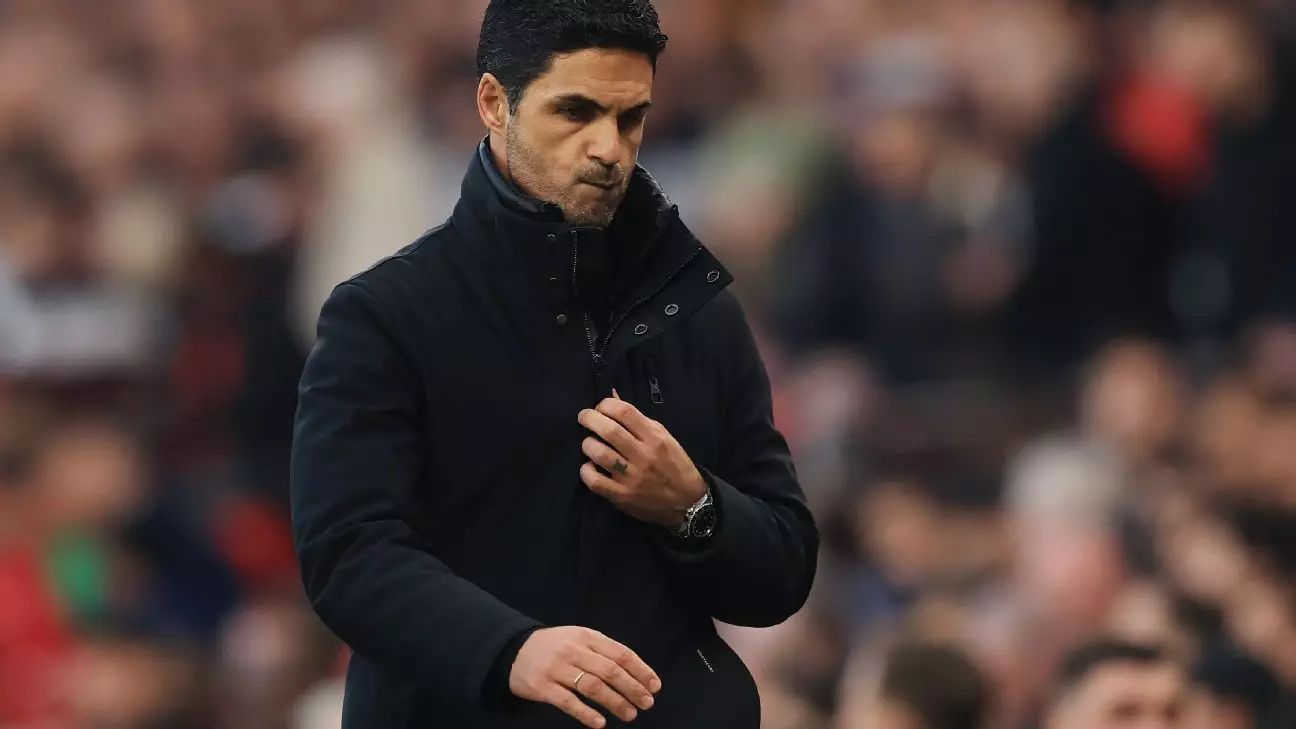Mikel Arteta, the Arsenal manager, stands at a significant crossroads as he grapples with the pressing necessity to overhaul his team’s striking options. Despite showing signs of progressive growth since his appointment in December 2019, the unwelcome reality of a fifth consecutive season devoid of silverware looms large over his tenure. His only trophy thus far, the FA Cup secured in 2020, highlights the challenges Arteta faces in translating improvement on the pitch into tangible success. As the club exits the Champions League after a disappointing semifinal loss to Paris Saint-Germain, the task of finding a striker who can genuinely elevate the team’s performance has never been more urgent.
Arteta’s insistence on signing a striker reveals an acute awareness of the position’s complexity. In modern football, strikers are not merely goal-scorers; they embody the tactical versatility and creative depth necessary for a team aspiring to compete at the highest levels. Identifying such talent within a competitive market, particularly when options appear limited, poses a daunting challenge. Previous missteps, such as the unsuccessful pursuit of Ollie Watkins during the January transfer window, underscore the difficulty of securing top-tier attacking talent.
Strategic Ambitions for the Forward Line
The notion that top strikers are among the hardest players to acquire, as emphasized by Arteta, is no mere platitude. The current climate in the Premier League illustrates this frustration, with standout attackers in high demand, making it imperative for Arsenal to act decisively yet wisely. Reports suggest that players like Benjamin Sesko from Red Bull Leipzig, Viktor Gyökeres of Sporting Lisbon, and Alexander Isak from Newcastle are being considered, signaling a proactive approach to rejuvenating the squad.
Arteta’s philosophy, which advocates for not just bolstering numbers but enhancing quality, reveals a deeper strategy. He advocates for bringing in multiple scorers, asserting that the addition of three players each capable of netting 25 goals would substantially improve Arsenal’s fortunes. This perspective highlights the reliance on a multifaceted attacking style rather than placing undue pressure on a singular star player. It also reflects an understanding that modern football’s demands require depth and versatility among forwards.
Managing Expectations and Player Evaluation
While the external pressures of performance weigh heavily on Arteta, his responses during press interactions show a manager committed to thoughtful evaluation rather than hasty decisions. Arteta stressed the importance of assessing current players in the wake of recent disappointments, urging against the tendency to label them as inadequate. His insistence on contextual evaluation speaks to a broader understanding of squad dynamics; form fluctuates, and so does effectiveness.
Arteta’s comments also shed light on the nature of public and media scrutiny, which can distort perceptions of player capabilities. His commitment to maintaining faith in his current squad amid calls for change is indicative of a long-term vision. It reveals not just confidence in his players, but a desire to instill resilience and continuity within the team, fostering an environment where players can thrive without the constant fear of replacement.
Acknowledging Competitors and Raising Standards
Another aspect of Arteta’s narrative is his recognition of quality, as illustrated by his remarks regarding Liverpool deserving a guard of honour. This maturity in acknowledging rivals is pivotal in elevating standards within the club. In artfully navigating discussions about the league’s contemporary giants, he demonstrates a profound respect for competition and the realities of performance. Rather than being defeated by the disparity in achievements, Arteta sees this as an impetus to propel his team to aspire to greater heights.
This approach creates an atmosphere of respect and ambition, reminding both his players and the fanbase that success requires hard work, resilience, and, crucially, an acceptance of past and present achievements—their own as well as those of rivals. Arteta’s stark acknowledgment that the team has regressed in the league this season adds a layer of accountability, reinforcing that the path to recovery will be neither straightforward nor immediate.
In crafting a formidable outfit, Arteta’s strategy must blend shrewd acquisitions, player development, and a refined style of play. The pressure is indeed mounting for Arsenal, and the journey to restoring their prominence starts with decisive and strategic action in the summer transfer window. The future of Arsenal’s attacking prowess hinges on Arteta’s ability to navigate this complex landscape and harness the talent he envisions—an endeavor that, if successful, could redefine the landscape of English football.


Leave a Reply